It may sound like a witch's brew, but I promise you: making your own kombucha isn't rocket science. Our kombucha recipe has a few ingredients that pack a punch, and you'll soon be enjoying your own kombucha from your fermentation vessel at home. With the video instructions and detailed tips, you're sure to succeed.
Making Kombucha Tea: The Basic Recipe for Fermentation Newbies!
To make kombucha, various ingredients are fermented with a tea fungus (also called a SCOBY). Fermentation is a preservation method that produces a unique flavor. In the case of kombucha, this process is aided by bacteria and yeast that have grown into the kombucha fungus—also called a SCOBY (symbiotic culture of bacteria and yeast).
Making DIY kombucha
Merle from Kombuchery explains how best to make your kombucha in a fermentation vessel with starter liquid in the video tutorial.
Make your own kombucha: the ingredients
When making kombucha, we generally recommend using organic ingredients for fermentation.
Before you can make your kombucha tea, you will need (per liter):
Place ingredients in a highlighted box
- 1 glass vessel (fermentation vessel, starter vessel) with a volume of at least 1.5 liters and a large opening (well rinsed without detergent)
- 1 kombucha mushroom, also called tea mushroom
- 8 g black tea or green tea
- 100 g e.g. whole cane sugar
- 1 liter of water (filtered if possible)
- Starter liquid or our Kombucha Original with neutral taste
- 1 breathable drape (preferably made of fabric)
Scoby for Kombucha Recipe: Where Do You Get It?
You can easily buy your SCOBY for your kombucha recipe online , or if you're lucky, another kombucha enthusiast can gift you a pre-grown scoby . Most suppliers include the starter liquid, or you can use our neutral-flavored Kombucha Original .
Kombucha instructions in 10 steps to the drink: Let's get started!
1. First, bring 1 liter of water to a boil in a large pot. Then add 8 g of either black or green tea and let it steep for 12 to 15 minutes (while the water is gently simmering).
2. Then strain the tea and add 100 g of sugar . Stir the sugar until it is completely dissolved in the tea.

3. When making your own kombucha, it's very important to let the sugar-infused tea cool in a glass container to at least 25 degrees Celsius (77 degrees Fahrenheit) . The delicate scoby must never be immersed in hot water . This can destroy the living bacteria, yeast, and proteins.
4. Now add 100 ml of the starter liquid to the tea mixture.

5. Then carefully add the previously rinsed Scoby into the container.

6. You can now cover the opening of the preparation vessel with an air-permeable cloth and secure it with a rubber band.

After completing these initial steps of the kombucha instructions, the scoby (at a comfortable room temperature) now has about a week to process the tea's ingredients, essentially "feeding" on them. If it sits at the bottom of the jar, the scoby will grow slightly larger and usually form more scoby offshoots. Often, however, the scoby will float, and over time, a thicker kombucha mushroom will form at the top of the jar.
- Once the kombucha fungus has reached the correct level of fermentation after about 7 days (depending on your preferences and taste, we recommend a pH value between 2.9 and 3.1), you can carefully remove the scoby from the kombucha liquid and rinse it with lukewarm water to remove any tea residue.
- You can store the scoby in some bottled kombucha liquid (new starter liquid) for the next round of making kombucha yourself.
- Before bottling the kombucha , we recommend filtering the liquid through a very fine sieve or, alternatively, through a layer of kitchen paper to remove any small pieces of the scoby. However, this is not absolutely necessary.
- The kombucha should then be allowed to undergo a second fermentation at room temperature for approximately two days in a sealed bottle. This also allows natural carbonation to develop.
Yay! You've now fermented your first kombucha and can enjoy a drink just as delicious and refreshing as our Kombuchery Kombucha.
Factbox – Make your own kombucha
Yield: Following these instructions, you'll have 1 liter of kombucha. You can use your SCOBY to make new kombucha as often as you like. If well cared for, it will keep for months, even years.
Nutritional values per 100 ml:
Fat < 0.5 g
of which saturated fatty acids < 0.1 g
Carbohydrates 3.6 – 11.8 g
of which sugar 3.6 – 11.8 g
Protein < 0.5 g
Working time: approx. 20 minutes (plus cooling time for the tea)
Fermentation time: approx. 7 days (depending on the desired pH value)
Tips & Tricks for Kombucha Fermentation
Even though it only requires a few ingredients and a short working time, care, hygiene and the quality of the components make for a good kombucha fermentation.
Starter liquid for kombucha
The amount of starter liquid shouldn't be too small. Your scoby should always be completely covered with it when it's resting to prevent mold from forming.
The rule of thumb for making your own kombucha is: 100 ml of starter liquid per liter of tea.
The more acidic the starter liquid, i.e., the lower the pH value, the less you need to make your kombucha. However, it's better to use it generously than too sparingly. This will ensure the growth of the scoby bacteria.
Do's & Don'ts in Tea Selection
- Do not use tea with a high content of essential oils or artificial flavors (e.g. fruit tea, tea made from sage or lemon balm).
- Use loose tea rather than tea bags.
- If you use fruit tea or tea other than black, green or white tea, only mix it in – not on its own!
Hygiene & Cleanliness
To ensure that no germs or foreign matter get into your kombucha, it's recommended to clean everything thoroughly. It's best to use vinegar to clean all objects and utensils. You can also clean your hands with vinegar and water.
The best water for boiling tea
It's hard to believe, but water quality plays a major role in kombucha production. This rather inconspicuous ingredient can affect your scoby both positively and negatively. Regular tap water may contain residual chlorine and chemicals, as well as fluoride. These substances can harm the scoby. Therefore, it's best to always use filtered water.
Kombucha storage & kombucha care
The finished kombucha beverage can be stored for up to 6 months. Bottling the kombucha does not automatically stop the fermentation process. Over time, the kombucha will become slightly more acidic and develop more fizzy natural carbonation.
Kombucha should be stored in a cool, dark place, if possible. This works best in a refrigerator or a cold basement. Here, kombucha is exposed to few external influences and can be stored undisturbed. This can extend its shelf life considerably. Constant cooling slows down fermentation , and the kombucha only gradually becomes slightly more acidic.
Making Kombucha from scratch: Can I make the tea fungus myself?
You can also make your own kombucha without a starter kit from the internet. The ingredients are the same and it just takes a little more time and patience.
With tea, cane sugar and our Kombuchery Raw Original as a starter liquid , the kombucha fungus can form on its own within 7 to 21 days , depending on the conditions.
It's exciting to watch small bubbles form on the surface of the liquid. These bubbles become increasingly dense over time until the kombucha mushroom slowly becomes visible. It's worth the patience! Making your own kombucha is truly exciting!
FAQs: Making your own kombucha drink
Can kombucha be dangerous?
Kombucha can't be dangerous. But here, too, everything in moderation applies. Since kombucha is a probiotic beverage, you should slowly get your body—especially your gut—accustomed to the drink. Furthermore, the longer kombucha sits, the more healthy acids it produces. Some people are sensitive to too much acid. In that case, you can dilute your kombucha with water, or if it becomes too acidic to drink at some point, you can use it like vinegar but in salad dressings . It won't go bad.
How much kombucha is healthy?
With kombucha, it's like any other food: you shouldn't overdo it. Start with a small glass a day and see how it affects you. After a few days, you can drink more.
There is no maximum amount that should be considered and that would lead to side effects.
Can you split the kombucha mushroom?
You can separate individual layers of the kombucha fungus with clean hands. Simply peel them off very carefully. Or use standard scissors cleaned with vinegar and carefully split the scoby into pieces. You can use the individual pieces to make a new kombucha in a starter jar or give it away as a gift.
Which tea is suitable for kombucha?
Black tea is particularly suitable for making your own kombucha, but oolong tea and green tea are also good choices for successful fermentation. A combination of green and black tea is also one of many possible alternatives.
Our favorites:
- Golden Monkey Black Tea: Darjeeling, Friesian Blend (Assam, Ceylon, Indian Himalaya)
- White tea: Silver Needle, Shou Mei, Oolong tea
- Green tea: Sencha & Matcha, New Spring, Chun Mee
How much alcohol is in kombucha tea?
The length and type of fermentation influence not only the flavor but also the alcohol content of the kombucha. Kombucha can contain up to 3% alcohol . However, it is usually less. After 14 days of fermentation, the alcohol content is between 0.5 and 1 percent at most .
Sugar in Kombucha
The added sugar is primarily needed by the microorganisms during fermentation. Yeasts and bacteria need sugar as a food source for their metabolic processes. Depending on the fermentation technique, the final sugar content is between 3 g and 12 g per 100 ml of kombucha . You can also experiment with the type of sugar yourself.
If, like us, you like it more tart and not too sweet, you can vary the amount of sugar, but you should never go below 80 g of sugar per liter, otherwise the microorganisms will not get enough food.
Shelf life of kombucha
Unpasteurized kombucha has a shelf life of about 3 to 6 months . Bottling the kombucha beverage does not automatically stop the entire fermentation process . Therefore, kombucha should be stored in a cool, dark place. This works best in the refrigerator or a cool room. There, the kombucha is not exposed to external influences and can be stored away from sun and heat . Kombucha that is not stored in a cool place will not go bad. It will simply become more acidic in taste and develop more natural carbonation.
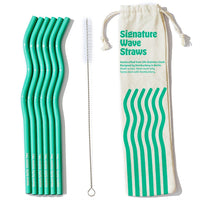
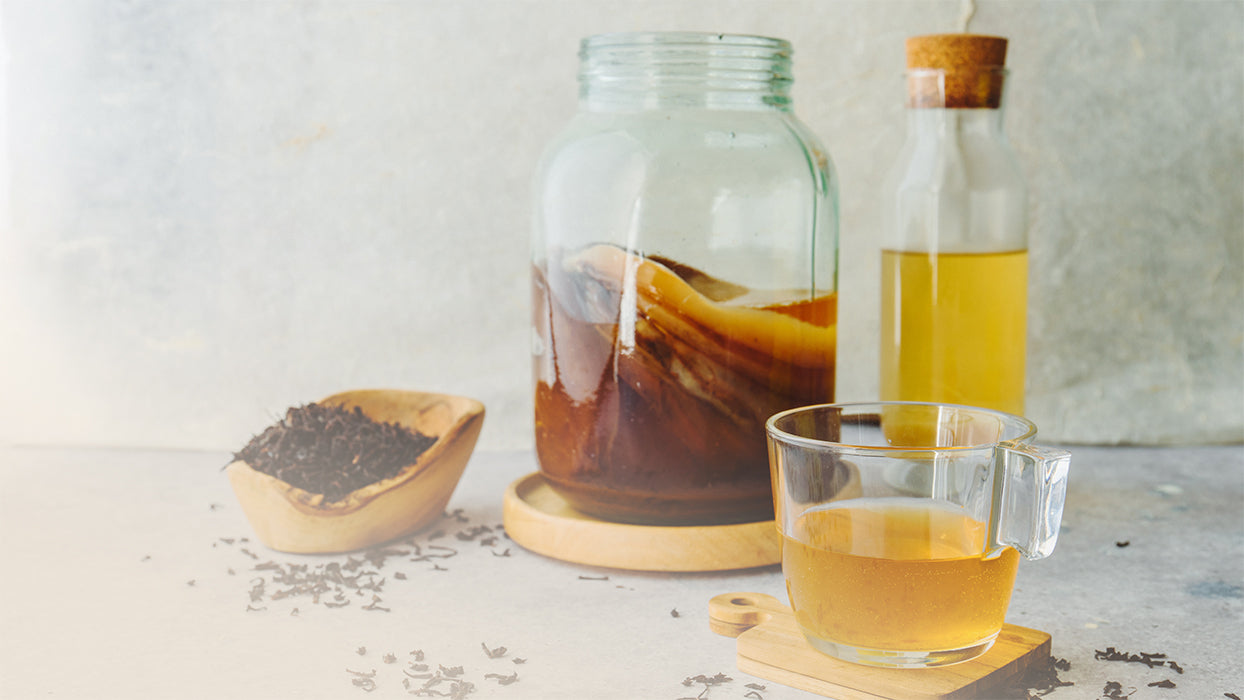
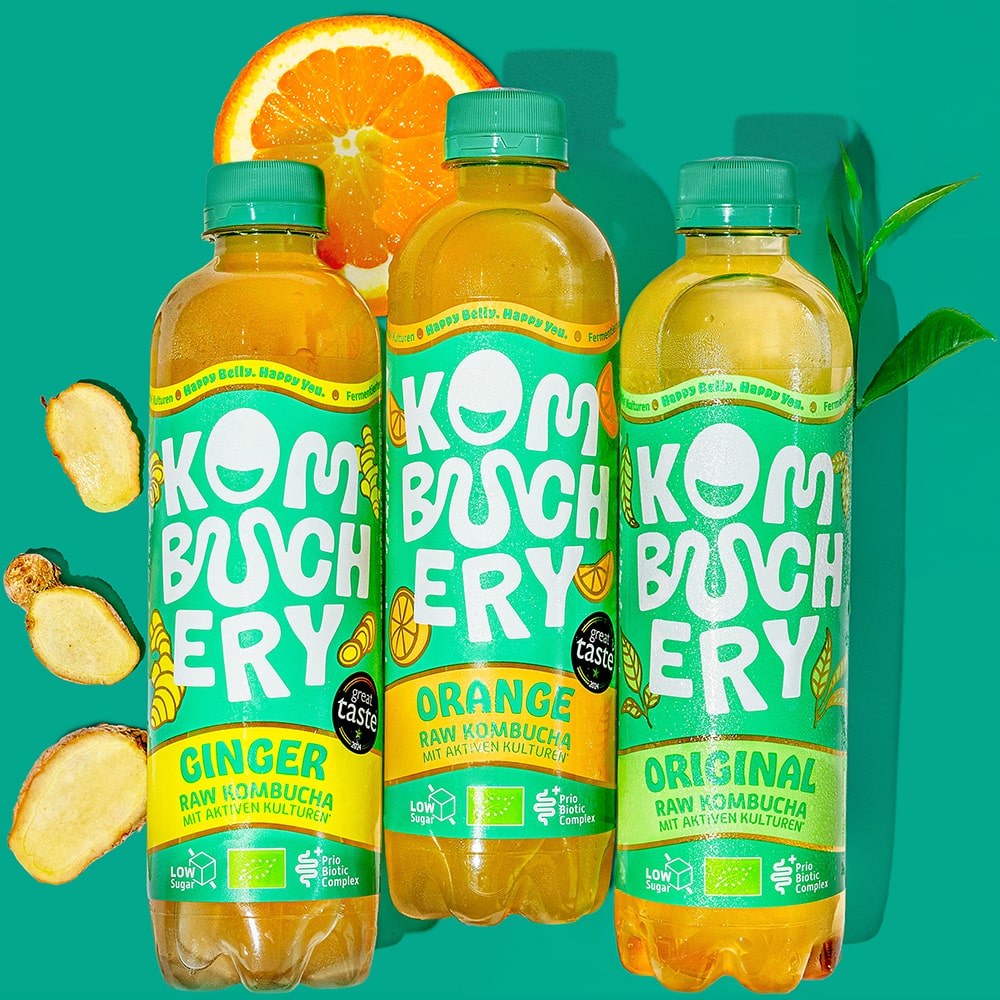
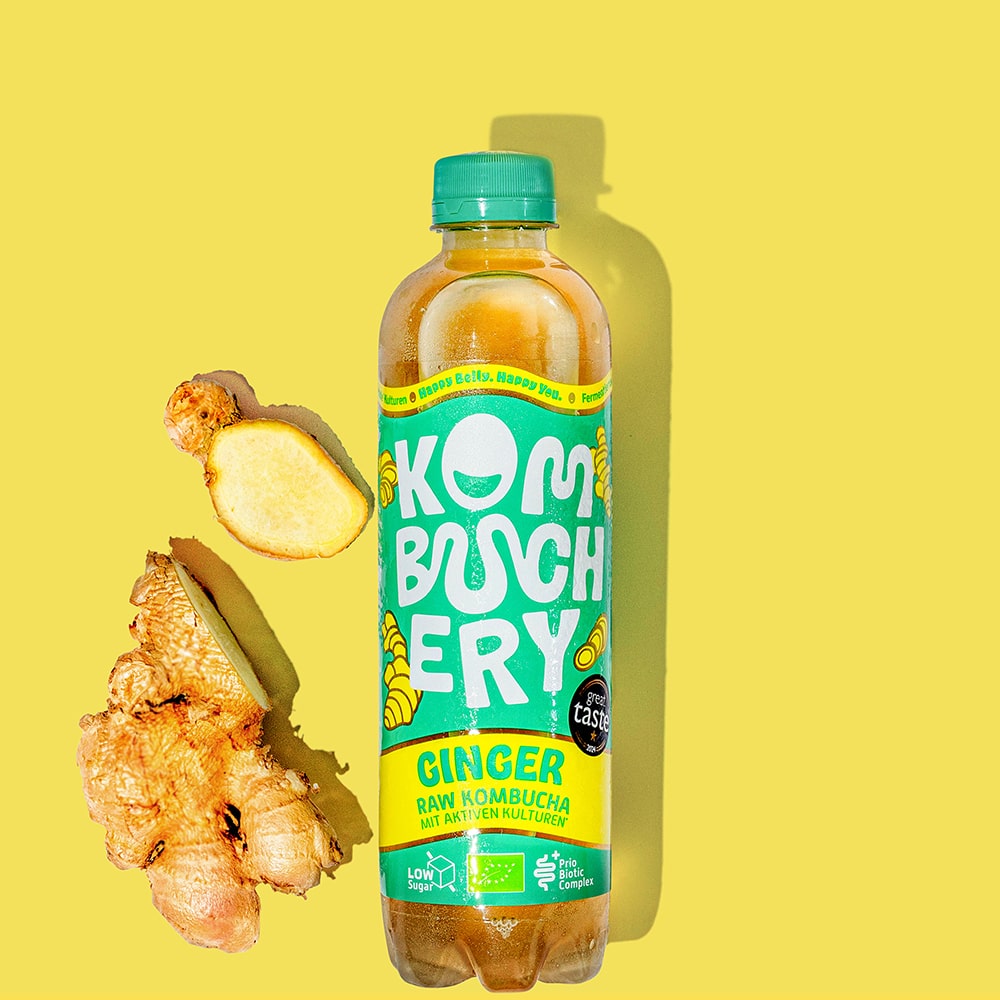
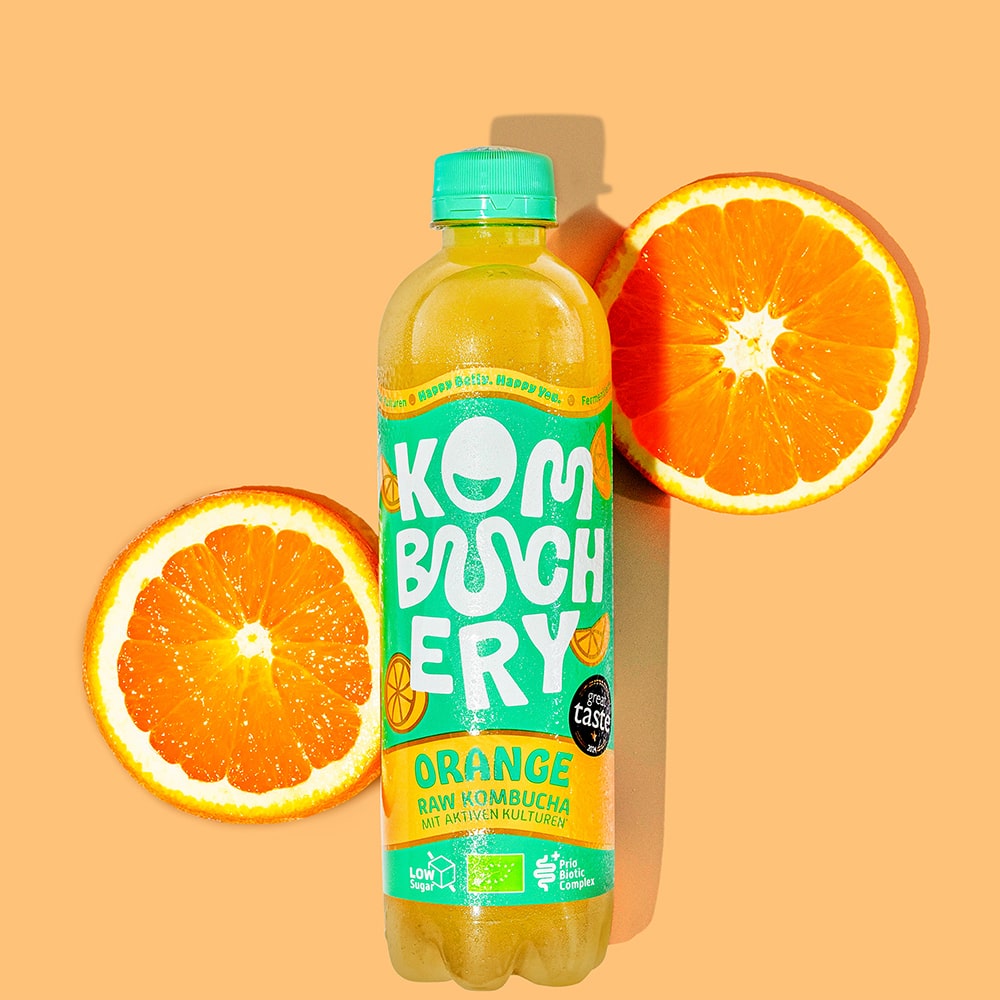
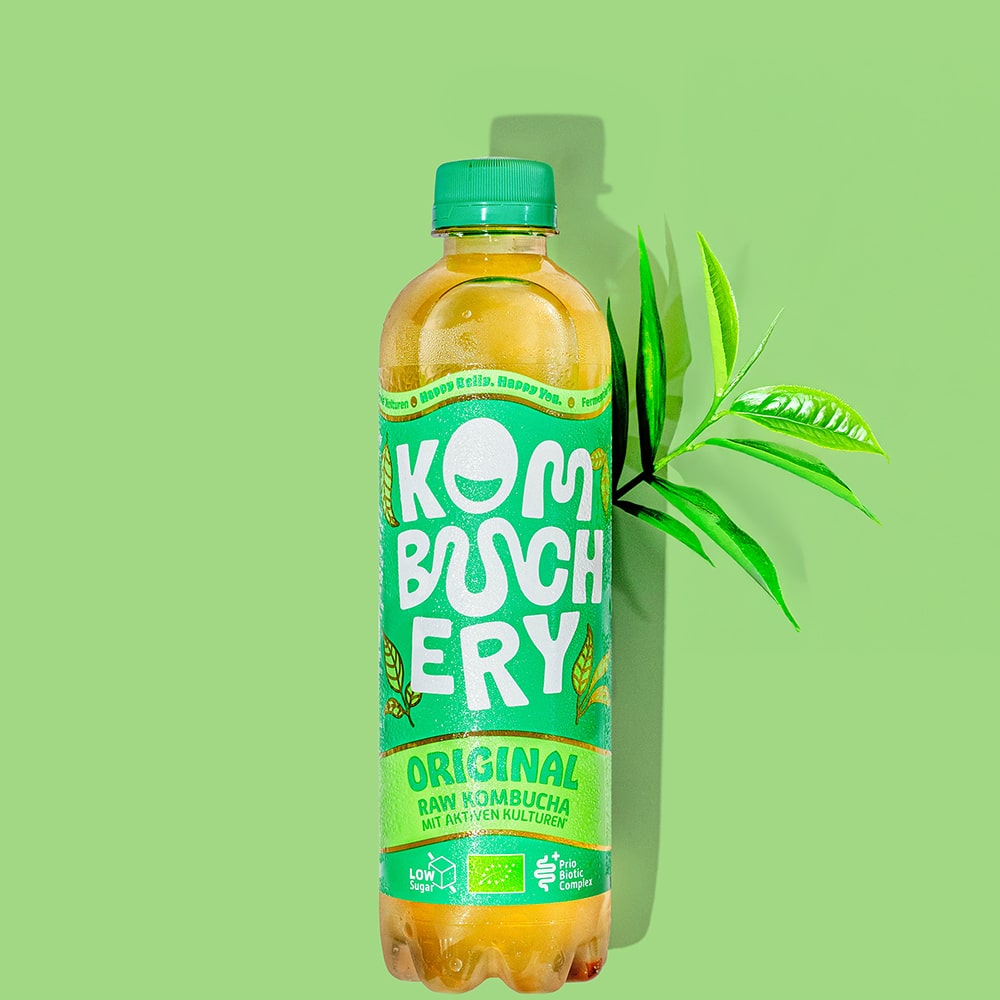
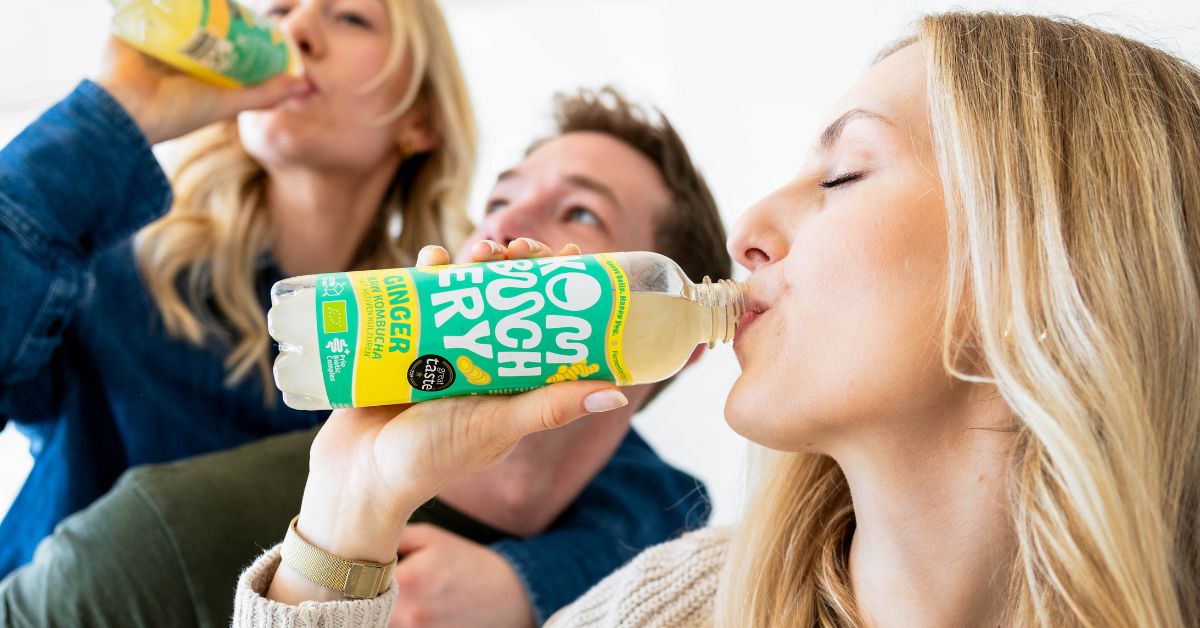
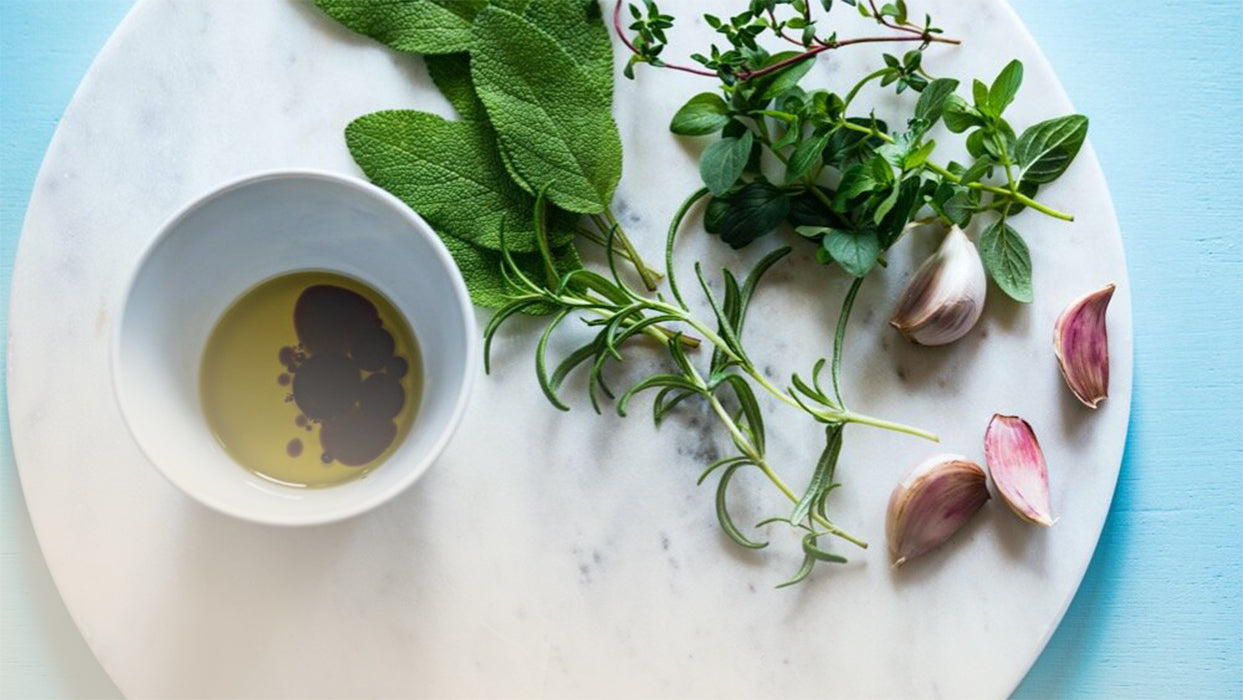

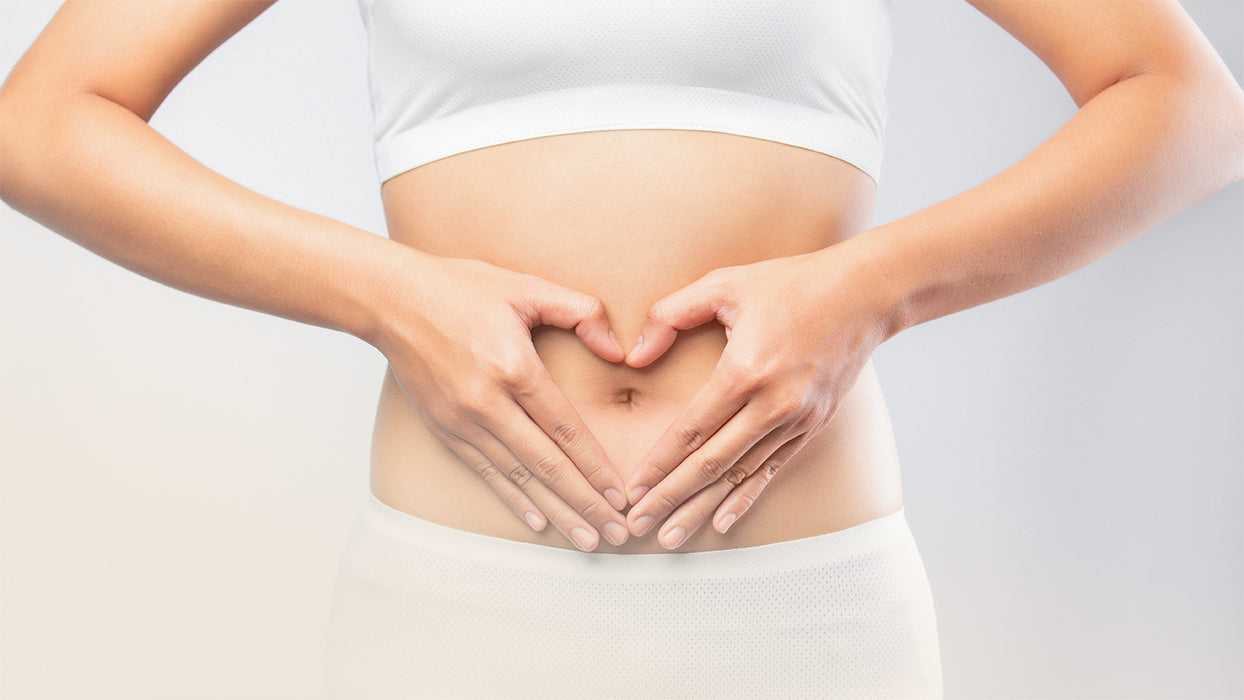
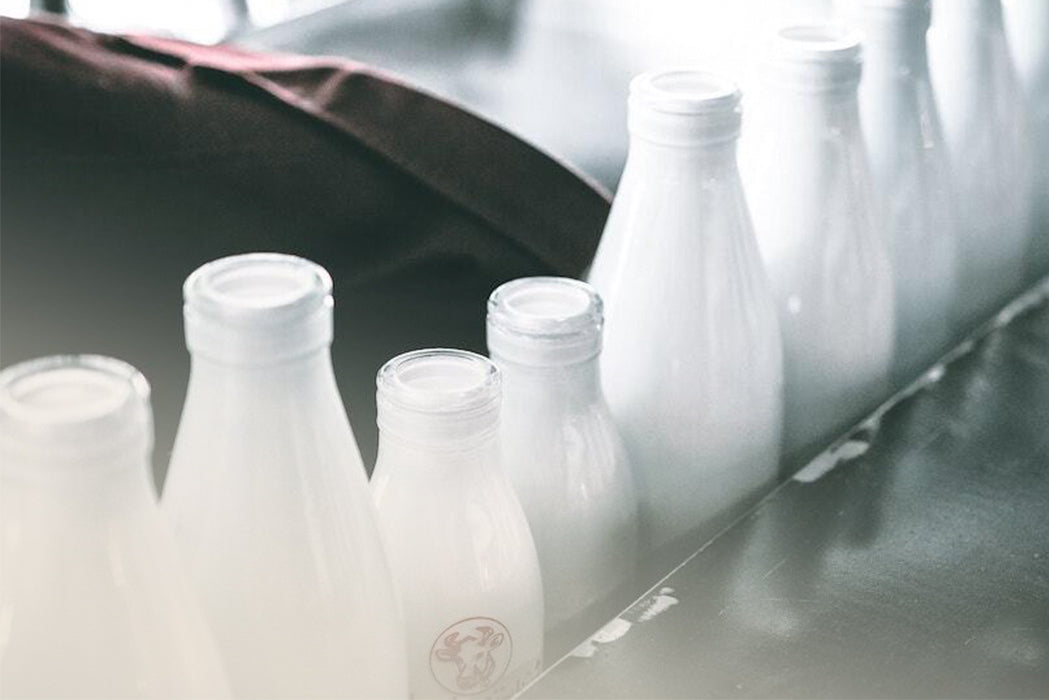
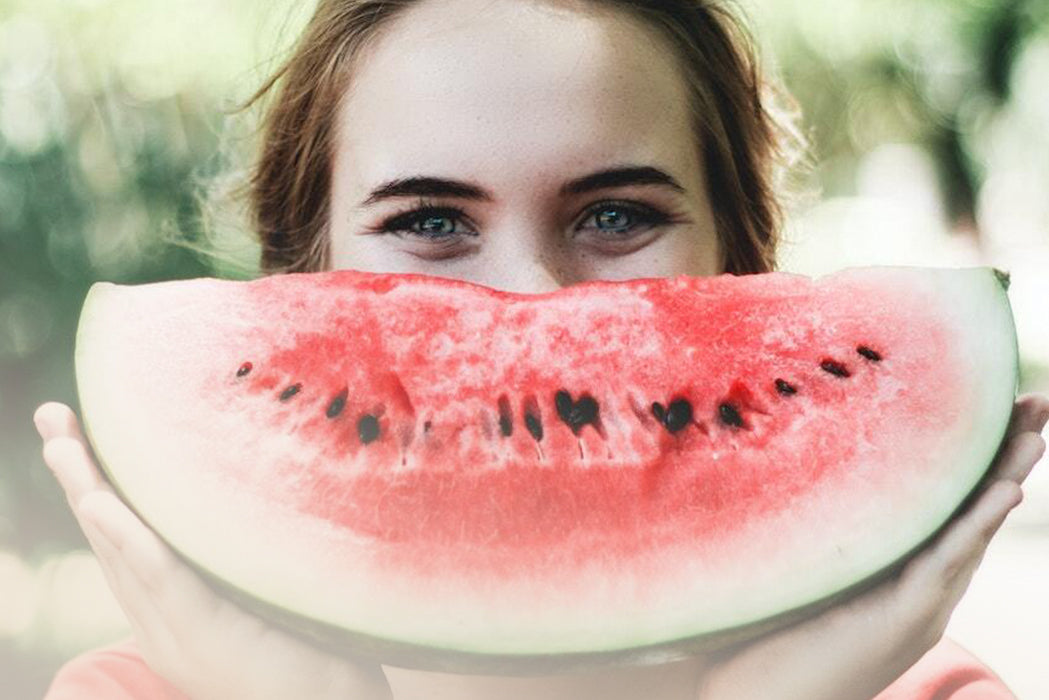
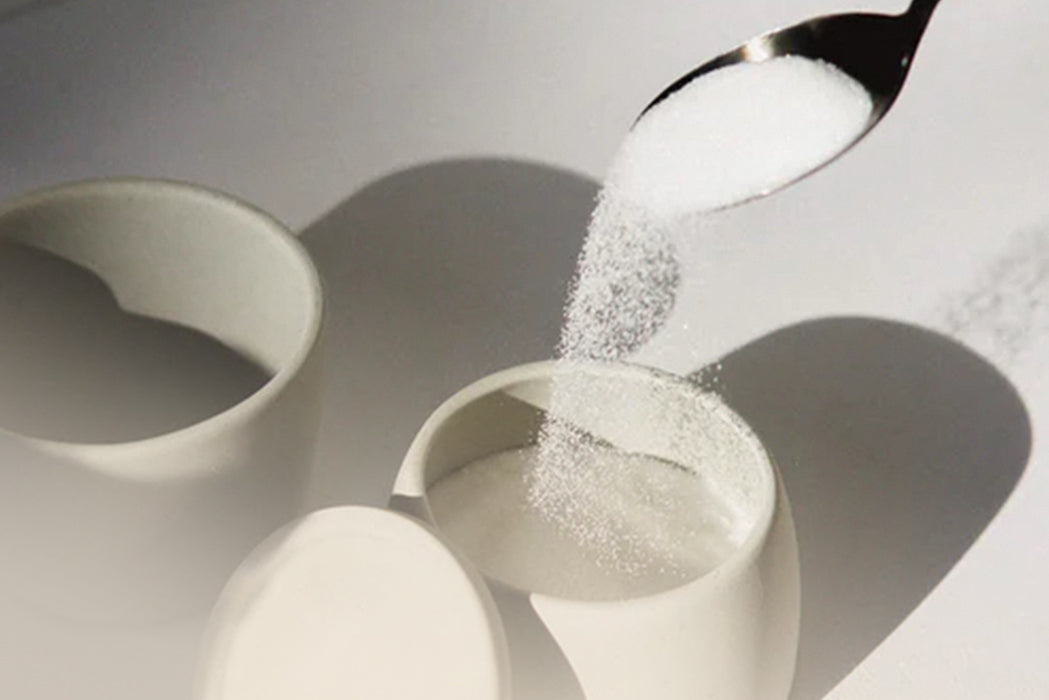
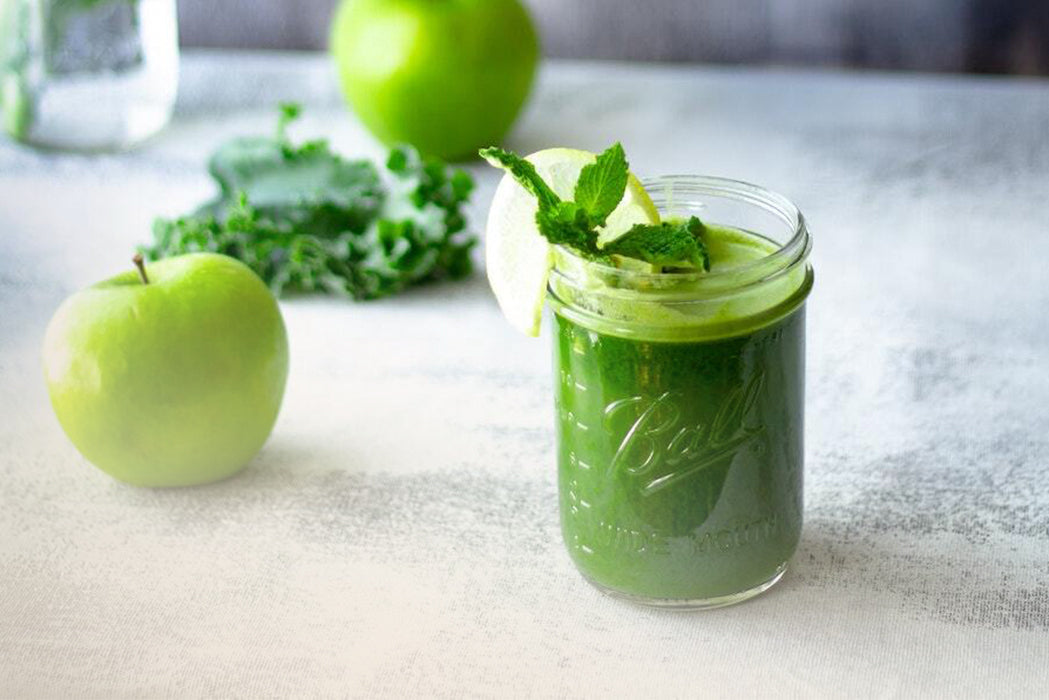
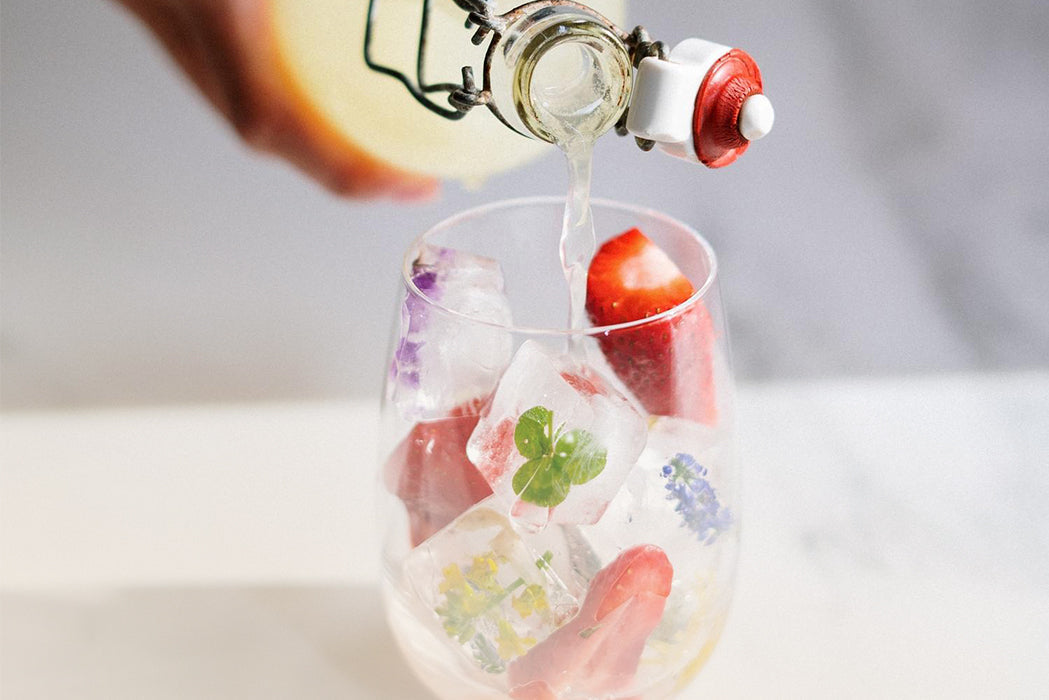
Split:
3 comments
Ich habe das erste Mal kombucher angesetzt und nach dem abfüllen probiert. Er schmeckt sehr süß, habe ich was falsch gemacht?
Hallo Hilga, du kannst alle Früchte und Gewürze benutzen, die du möchtest. Da kann man ganz wild experimentieren.
Liebe Grüße!
verwendest du auch die oben abgebildeten Zutaten Zitrone und Ingwer?